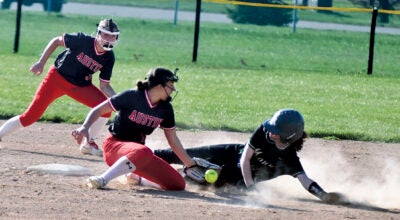50 states, 50 heroes: Hill 200
Published 5:45 am Saturday, January 25, 2020
Born on Sept. 29, 1924, in Tichnor, Arkansas, Lloyd Leslie Burke dropped out of Henderson State Teachers College (now Henderson State University) to enlist in the U.S. Army in April 1943. Known as “Scooter,” Burke achieved the rank of sergeant while serving with a combat engineer unit in Italy. Upon returning home, Burke went back to Henderson and joined the Army Reserve Officers’ Training Corps. He was commissioned a second lieutenant in June 1950 and assigned to the First Cavalry Division.
Five months later, Burke was commanding Company G of Second Battalion, Fifth Cavalry Regiment in Korea. By October 1951, Burke’s tour of duty was almost over, and he was eager to return home to see his wife and son. He was at the regimental command post with a ticket to go home when he heard reports that his company had met resistance at the Yokkok-chon River from an entrenched force of about 300 Chinese soldiers on a position dubbed Hill 200, about two miles from the command post. Burke monitored the battle for a few days; on Oct. 28, he decided that he had enough. He left the command post and, knowing full well that his decision could mean he might never see his family again, went to his company’s position, finding them down to 35 battered and demoralized men.
“These men were completely beat,” he later recalled. “They lay huddled in foxholes, unable to move. They all had the thousand-yard stare of men who’d seen too much fighting, too much death.”
Burke sprang into action, moving to an exposed vantage point and throwing several grenades at the Chinese bunkers. He then returned to his men, grabbed a M1 Garand rifle and made a lone assault on the Chinese position, picking off Chinese soldiers that rose up to throw grenades and killing the crew in the bunker.
Inspired by his actions, his men overran the position, only to be pinned down by more Chinese fire. Burke took a machine gun and dashed through enemy fire to an open knoll. From there, he fired at the Chinese, killing about 75 men. He then called for more ammunition and rained down fire into the enemy trench, destroying two mortar emplacements and a machine gun.
During the fight, a Chinese grenade injured Burke, but he kept up the attack. Cradling the machine gun, he and his men chased the fleeing Chinese soldiers, killing an additional 25. Hill 200 was in American hands.
Burke returned to the United States and was awarded the Medal of Honor by President Harry Truman during a White House ceremony on April 11, 1952.
Burke continued to serve in the Army and was promoted to battalion commander in the First Infantry Division. In 1965, during the Vietnam War, he was wounded by an enemy grenade while in a helicopter. His injuries sent him back to the United States; he spent the rest of his military career as the Army’s deputy chief, then chief liaison to the U.S. House of Representatives before retiring with the rank of colonel in 1978.
In addition to the Medal of Honor, Burke also received the Distinguished Service Cross, three Bronze Stars and five Purple Hearts.
After retirement, Burke helped with organizing and creating the Korean War Memorial, which was dedicated by President Bill Clinton in 1995.
Burke died on June 1, 1999, at the age of 74 at his home in Hot Springs, Arkansas. He is buried in Arlington National Cemetery.
In 2004, a post office in Stuttgart, Arkansas, was named in Burke’s honor. Participants in the Army ROTC program at Henderson State University are known as “Burke’s Raiders.”


